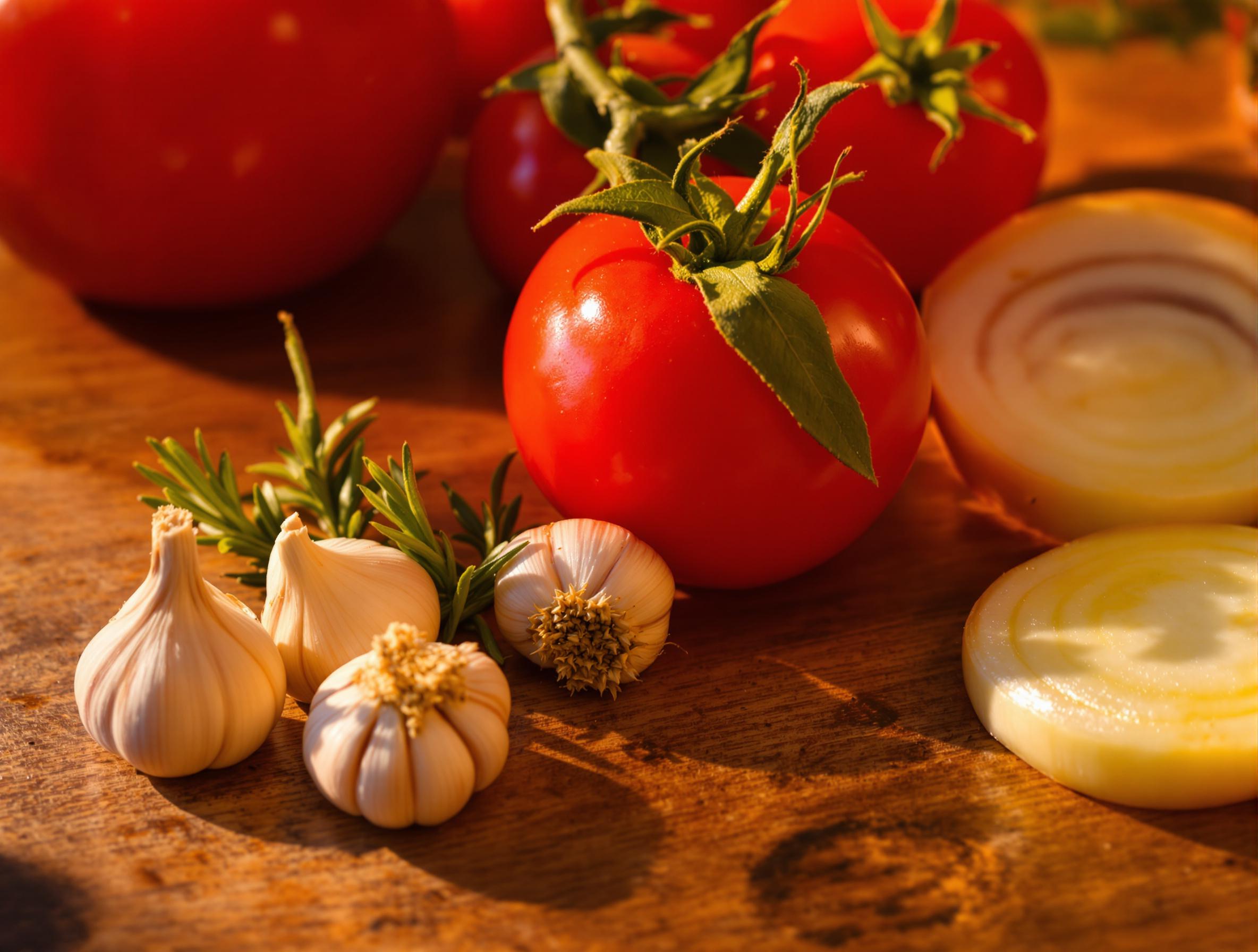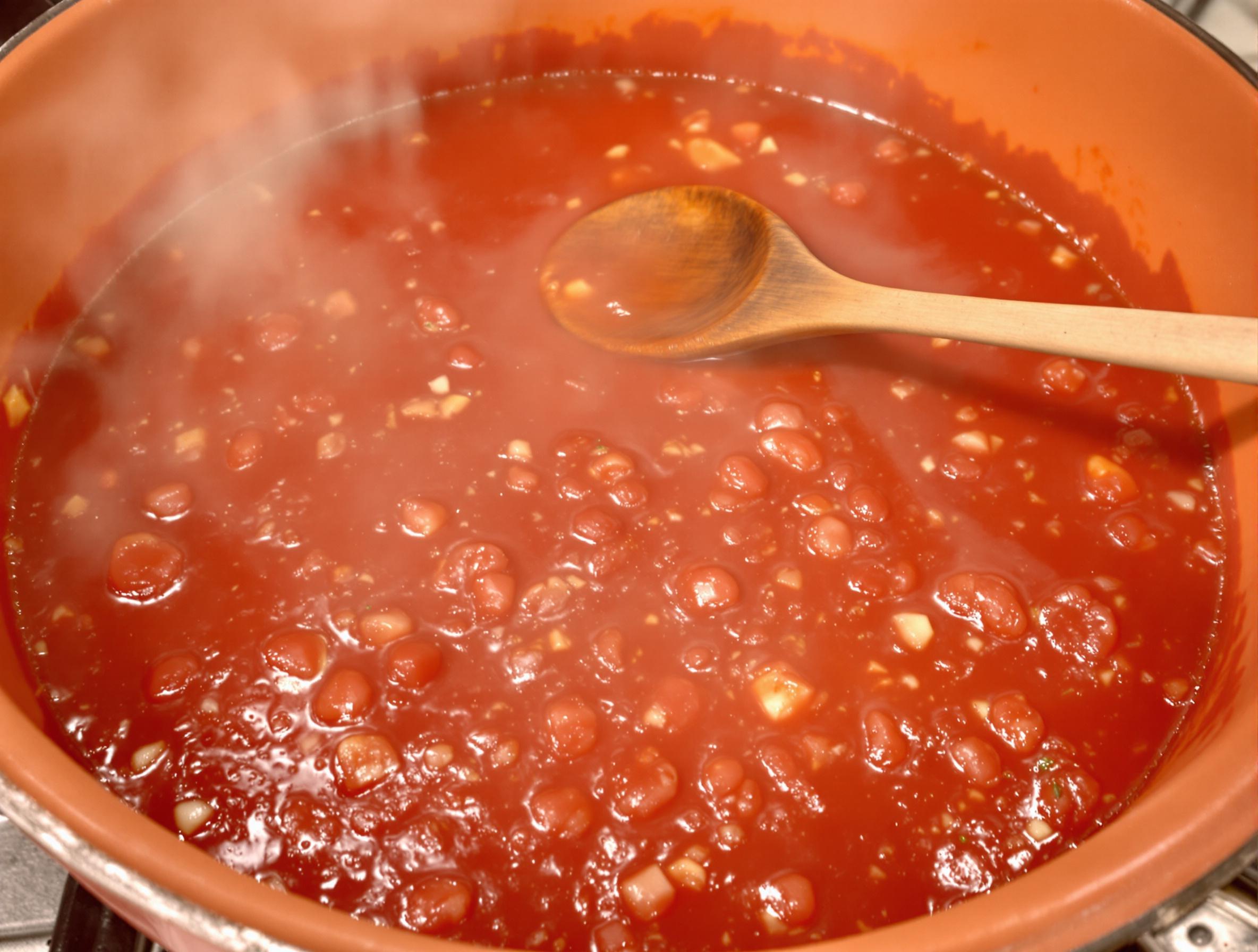Introduction
The tomato bisque recipe is a classic comfort food that warms the soul with its rich, creamy texture and vibrant tomato flavor. This velvety soup is a favorite among many, perfect for chilly days or when you crave something cozy and indulgent. Whether you’re a seasoned chef or a home cook, mastering the art of tomato bisque is a culinary journey worth embarking on. The process of creating this soup is not only satisfying but also allows for endless creativity and customization. Let’s dive into the world of tomato bisque and explore its history, key ingredients, step-by-step recipe, variations, serving suggestions, nutritional information, storage tips, FAQs, and expert tips.

History and Origin of Tomato Bisque
The origins of tomato bisque can be traced back to traditional French cuisine, where the term “bisque” originally referred to a shellfish soup thickened with a paste made from ground shells. Over time, the term has evolved to encompass any creamy, smooth soup, with tomato bisque becoming a beloved variation. The transformation from simple tomato soup to the luxurious tomato bisque we enjoy today is a testament to culinary innovation.
The evolution of tomato bisque is a fascinating story that reflects the broader changes in culinary trends and techniques. In the early days, bisques were primarily associated with seafood, particularly lobster and crab. The shells of these crustaceans were ground into a fine paste and used to thicken the soup, giving it a unique texture and depth of flavor. However, as culinary practices evolved, chefs began to apply the bisque technique to other ingredients, including vegetables like tomatoes.
The addition of cream to tomato soup, transforming it into a bisque, was a significant development. This innovation not only enhanced the soup’s texture but also added a layer of richness and indulgence. The creamy and velvety consistency of tomato bisque quickly gained popularity, becoming a staple in many restaurants and households.
For more on the history of tomato soup and its evolution into the creamy bisque we know today, explore this article. Understanding the historical context of tomato bisque can deepen your appreciation for this delightful dish and inspire you to create your own unique variations.
Key Ingredients for Tomato Bisque

Creating the perfect tomato bisque begins with selecting the right ingredients. Each component plays a crucial role in developing the soup’s flavor, texture, and overall appeal. Here’s what you’ll need:
-
Tomatoes: The star of the show, you can use either fresh or canned tomatoes. Canned tomatoes offer convenience and a deeper flavor, while fresh tomatoes provide a brighter taste. When using fresh tomatoes, opt for ripe, juicy varieties like Roma or heirloom. Canned tomatoes, such as San Marzano, are an excellent choice for their consistent quality and rich flavor.
-
Dairy: Heavy cream or whole milk is essential for achieving the signature velvety texture of a bisque. It adds richness and smoothness to the soup, enhancing its mouthfeel and overall indulgence. For a lighter version, you can use half-and-half or even evaporated milk, but keep in mind that the soup’s creaminess may be slightly compromised.
-
Aromatics: Onions, garlic, celery, and carrots form the flavor base. These ingredients are sautéed to release their aromas and enhance the soup’s depth. Onions and garlic provide a savory foundation, while celery and carrots add subtle sweetness and a hint of earthiness. Sautéing these aromatics in butter or olive oil helps to develop their flavors and creates a fragrant base for the soup.
-
Herbs and Spices: Basil, thyme, and bay leaves are commonly used to infuse the soup with herbal notes. Red pepper flakes can be added for a touch of heat, depending on your preference. Fresh herbs, when available, offer a more vibrant flavor than their dried counterparts. Experiment with different herb combinations to find the one that best suits your taste.
-
Stock: Vegetable or chicken stock serves as the liquid base, adding layers of flavor. Using homemade stock can further enhance the soup’s depth and complexity. For a vegetarian or vegan version, opt for vegetable stock or even water, as suggested in some recipes.
For a vegan alternative, consider using coconut milk as suggested in this recipe. Coconut milk provides a creamy texture and a subtle coconut flavor that complements the tomatoes and aromatics.
Step-by-Step Tomato Bisque Recipe

Follow these detailed steps to create a delicious tomato bisque:
-
Preparation: Gather and prepare your ingredients. Chop the aromatics finely and measure out the spices and liquids. Having everything ready before you start cooking will make the process smoother and more enjoyable.
-
Cooking Process:
- In a large pot, melt butter over medium heat. Add the chopped onions, garlic, celery, and carrots. Sauté these aromatics until they are softened and fragrant, about 5-7 minutes. This step is crucial for developing the soup’s flavor base.
- Add the tomatoes, stock, and herbs to the pot. Stir well to combine all the ingredients. Bring the mixture to a simmer and let it cook for about 20-30 minutes. This allows the flavors to meld together, creating a harmonious and delicious soup base.
-
Blending: Use an immersion blender or traditional blender to puree the soup until smooth. This step is crucial for achieving the velvety texture of a bisque. If using a traditional blender, be careful when blending hot liquids. Work in batches and cover the blender lid with a towel to prevent accidents.
-
Finishing Touches: Stir in the cream and season with salt and pepper to taste. Add any optional garnishes like fresh basil or a swirl of cream. This final touch enhances the soup’s presentation and adds a layer of elegance.
Variations and Customizations for Tomato Bisque

Tomato bisque is versatile and can be customized to suit various dietary preferences and personal tastes. Here are some variations to consider:
-
Vegan Options: Substitute heavy cream with coconut milk for a plant-based version. Coconut milk provides a creamy texture and a subtle coconut flavor that complements the tomatoes and aromatics. You can also use other plant-based milk alternatives, but keep in mind that the soup’s creaminess and flavor may vary.
-
Spicy Variations: Add chili peppers or hot sauce for a kick of heat. If you prefer a milder spice, opt for red pepper flakes or a pinch of cayenne pepper. Adjust the amount based on your desired level of heat.
-
Add-Ins: Enhance the soup with cheese, croutons, or fresh herbs for added flavor and texture. Grated Parmesan or cheddar cheese can be stirred into the soup or used as a topping. Croutons add a satisfying crunch, while fresh herbs like basil or parsley provide a pop of color and freshness.
-
Protein Options: For a heartier version, consider adding cooked chicken, shrimp, or even lentils to the soup. These protein sources can complement the tomato bisque’s flavors and make it a more substantial meal.
Serving Suggestions for Tomato Bisque

Tomato bisque is delightful on its own, but it pairs exceptionally well with various accompaniments. Here are some serving suggestions to elevate your dining experience:
-
Grilled Cheese Sandwiches: The classic pairing of tomato bisque and grilled cheese sandwiches is a comfort food match made in heaven. The creamy soup complements the gooey, melted cheese and crispy bread, creating a satisfying and indulgent meal.
-
Crusty Bread: Serve the soup with a side of crusty bread for dipping. The bread’s texture contrasts beautifully with the soup’s velvety smoothness, making each bite a delightful sensory experience.
-
Side Salad: A simple side salad with mixed greens, cherry tomatoes, and a light vinaigrette can balance the soup’s richness. The freshness of the salad complements the creamy bisque, creating a harmonious meal.
-
Main Dishes: Pair the soup with main dishes like roasted chicken, pasta, or even a hearty steak. The soup’s tomato base and creamy texture can complement a variety of flavors and proteins, making it a versatile option for any meal.
Nutritional Information for Tomato Bisque
Tomato bisque is not only delicious but also nutritious. It’s packed with vitamins and antioxidants from the tomatoes and aromatics. Tomatoes are an excellent source of lycopene, a powerful antioxidant that supports heart health and may reduce the risk of certain cancers. The aromatics, such as onions, garlic, celery, and carrots, provide additional vitamins, minerals, and fiber.
However, keep in mind that the cream adds calories and fat to the soup. To enjoy tomato bisque as part of a balanced diet, consider the following tips:
- Portion Control: Enjoy a modest serving of the soup, and pair it with a side salad or other nutrient-dense foods to create a well-rounded meal.
- Lighten It Up: Opt for a lighter version of the soup by using low-fat dairy or reducing the amount of cream. You can also increase the proportion of vegetables to boost the soup’s nutritional value.
- Hydration: Stay hydrated by drinking plenty of water throughout the day, especially if you’re enjoying a sodium-rich version of the soup.
Storage and Reheating Tips for Tomato Bisque
To maintain the quality of your tomato bisque, follow these storage and reheating tips:
-
Refrigeration: Store leftovers in an airtight container in the refrigerator for up to three days. This helps to preserve the soup’s freshness and flavor.
-
Freezing: Freeze portions for up to three months. To freeze, allow the soup to cool completely before transferring it to a freezer-safe container or bag. Thaw overnight in the refrigerator before reheating.
-
Reheating: Reheat the soup gently on the stovetop over medium-low heat, stirring occasionally to prevent scorching. If the soup is too thick after reheating, you can thin it out with a bit of stock or water.
-
Meal Prep: Tomato bisque is an excellent option for meal prep. Portion the soup into individual containers and freeze for later use. This allows you to have a delicious and comforting meal ready in minutes.
FAQs about Tomato Bisque
-
What is the difference between tomato soup and tomato bisque?
- Tomato bisque is creamier and thicker due to the addition of dairy, while tomato soup is typically thinner and may not contain cream. The cream in tomato bisque provides a velvety texture and rich mouthfeel, setting it apart from traditional tomato soup.
-
Can I use fresh tomatoes instead of canned?
- Yes, fresh tomatoes can be used, but they require more preparation time and may affect the soup’s consistency. To use fresh tomatoes, blanch them briefly in boiling water, then peel and dice before adding them to the soup. Keep in mind that fresh tomatoes may have a slightly different flavor profile and water content compared to canned tomatoes.
-
How can I make tomato bisque vegan?
- Substitute heavy cream with coconut milk for a plant-based version. Coconut milk provides a creamy texture and a subtle coconut flavor that complements the tomatoes and aromatics. You can also use other plant-based milk alternatives, but keep in mind that the soup’s creaminess and flavor may vary.
-
Can tomato bisque be frozen?
- Yes, tomato bisque can be frozen for up to three months. To freeze, allow the soup to cool completely before transferring it to a freezer-safe container or bag. Thaw overnight in the refrigerator before reheating. Keep in mind that freezing and thawing may slightly affect the soup’s texture and consistency.
-
What can I serve with tomato bisque?
- Tomato bisque pairs well with grilled cheese sandwiches, crusty bread, or a side salad. For a heartier meal, consider serving the soup alongside main dishes like roasted chicken, pasta, or even a hearty steak. The soup’s versatility allows it to complement a variety of flavors and textures.
Expert Tips and Tricks for Tomato Bisque
Creating the perfect tomato bisque requires attention to detail and a few expert tips and tricks. Here are some insights to help you achieve culinary success:
-
Achieve the Perfect Consistency: Blend the soup thoroughly to ensure a smooth and velvety texture. Use an immersion blender or traditional blender to puree the soup until no chunks remain. If desired, strain the soup through a fine-mesh sieve to remove any remaining solids.
-
Avoid Overcooking the Cream: Add the cream towards the end of the cooking process to prevent it from curdling or separating. Overcooking the cream can result in a grainy texture and diminished flavor.
-
Experiment with Herbs and Spices: Customize the soup’s flavor profile by experimenting with different herbs and spices. Consider adding fresh thyme, oregano, or even a pinch of smoked paprika for added depth and complexity.
-
Adjust Seasoning: Taste the soup throughout the cooking process and adjust the seasoning as needed. Keep in mind that the soup’s flavors may concentrate as it simmers, so it’s essential to balance the salt and pepper accordingly.
-
Garnish with Flair: Enhance the soup’s presentation by garnishing it with fresh herbs, a swirl of cream, or even a sprinkle of grated cheese. These finishing touches not only add visual appeal but also contribute to the overall dining experience.
Conclusion
Tomato bisque is a timeless classic that combines the comfort of tomato soup with the elegance of creamy bisque. Whether you prefer a traditional recipe or a vegan alternative, this soup is sure to impress. The process of creating tomato bisque is not only satisfying but also allows for endless creativity and customization.
From selecting the right ingredients to experimenting with variations and serving suggestions, every step of the journey contributes to the final masterpiece. So, grab your apron and get ready to create a culinary delight that will warm your heart and soul. Happy cooking!
